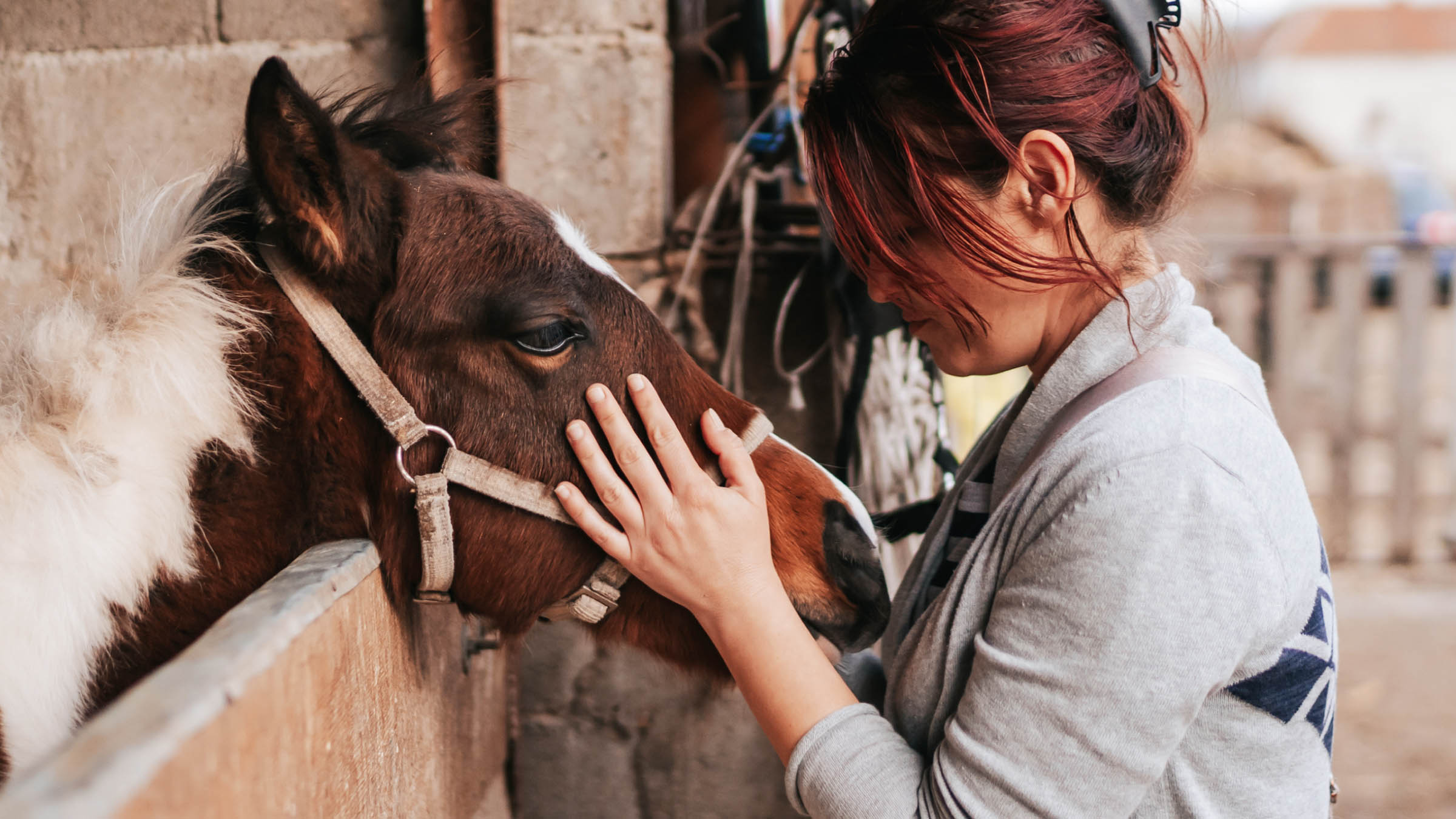
Influenza
Equine influenza, also known as horse flu, presents with similar symptoms to flu in humans, namely a sudden high temperature and cough. The symptoms, especially the cough, can last for several weeks and weaken your horse. If your pet has caught it, this is stressful not only for your animal: because equine influenza is highly contagious for other horses, you will need to take certain measures. For example, the sick horse must be isolated from other horses, hands must not only be washed after each contact, but must also be disinfected, as must clothing, blankets and all objects with which the horse has had contact (including horse trailers and stables).
The good news is that if you recognize the problem quickly, your horse can be helped quickly. There is also a vaccination against equine influenza, which many horse owners make use of. The symptoms are often milder in vaccinated animals.

DEFINITION
What is equine influenza?
Equine influenza is one of the most common viral infections of the respiratory tract in horses. It can affect both the upper and lower respiratory tract. The viruses are transmitted quickly as a droplet infection, i.e. via coughing or sneezing. Each cough releases enormous amounts of virus. This means that horses standing many meters away in the stable or in the pasture can also become infected.
In addition to the disease itself, there is also a risk of secondary diseases: Your horse's mucous membranes have been attacked by the viral infection and now provide a good breeding ground for bacteria. Experts refer to this as a secondary bacterial infection. If left untreated, influenza can therefore also lead to pneumonia or myocarditis, for example, and in the worst case can be fatal.
SYMPTOMS
Symptoms of equine influenza
Depending on the type of virus, the time between infection and the first symptoms of equine influenza can vary from a few hours to a few days. The typical signs include:
- Fever spikes
- Severe, dry coughing fits
- Weakness/lethargy
- Loss of appetite
- Accelerated breathing / shortness of breath
- Eye and nasal discharge (watery to yellow-greenish, mucoid in the case of a secondary bacterial infection)
CAUSES
Causes
If your horse has contracted equine influenza, an influenza type A virus is responsible. This is not only transmitted directly from horse to horse, but also indirectly via contaminated objects (transporters, feed troughs, bridles and saddlery, cleaning materials, etc.). This is why an infection spreads preferentially where there are many horses at the same time: riding stables, horse racing tracks or tournaments.
Poor hygiene, inadequate vaccination and quarantine measures, as well as the transportation of sick horses without appropriate precautions, also contribute to the spread of the virus.
DIAGNOSIS
Examination and diagnosis of equine influenza
Equine influenza is usually diagnosed on the basis of the history and symptoms such as the typical dry cough and fever. Various rapid tests also help your veterinarian to confirm the diagnosis, - and swabs can be used to determine the exact type of virus that has caused the disease in your horse.
TREATMENT
Treatment
Unfortunately, there are no active substances approved for horses that specifically help against the influenza viruses. However, the symptoms your horse is suffering from can be treated: If it has a fever, it will be given antipyretics and, if necessary, so-called bronchospasmolytics to combat breathing difficulties. These have a relaxing effect on the bronchial tubes and make breathing easier. In the event that a secondary bacterial infection has already occurred, your horse will usually be given a suitable antibiotic.
In addition to the medication mentioned, you can support your horse with natural veterinary medicines to boost its immune system. Your veterinarian will recommend suitable remedies and other measures.
The most important measure is to take it easy until your horse is fit again. Only when all symptoms have completely subsided and you have the veterinarian's approval should you slowly start training again - and be patient. It can take time for a horse to regain its usual condition after recovering from the flu.
Good to know
Hygiene and precaution are essential when it comes to equine influenza: In addition to isolating the horse and animals it has been in contact with, this also includes thoroughly cleaning and disinfecting hands, clothing and objects (including stable walls, trailers etc.). This is the only way to reduce the risk of the disease spreading. Anyone caring for sick animals should wear protective clothing if possible. But don't worry, the virus is not transmissible to humans.
PREVENTION
PREVENTION
Various measures can help to prevent equine influenza:
Vaccination is one of the most effective ways to protect your horse from influenza. Talk to your veterinarian about the current vaccination recommendations. This is particularly important if you want to take part in competitions with your horse. Vaccination must be repeated at regular intervals to maintain protection.
Hygiene is extremely important, especially in environments where many horses come together. Clean and disinfect all equipment such as saddles, bridles, brushes and buckets regularly.
When new horses enter the stable, they should be temporarily separated to ensure that they do not introduce any infection.
If you suspect that one of the horses in the stable might have flu, it should be isolated from the others. Above all, avoid direct contact between your horse and infected animals.
If you take part in competitions with your horse, make sure that your horse is healthy before it has into contact with other horses. Avoid close contact with horses whose health status is unknown and follow the organizer's hygiene recommendations.


